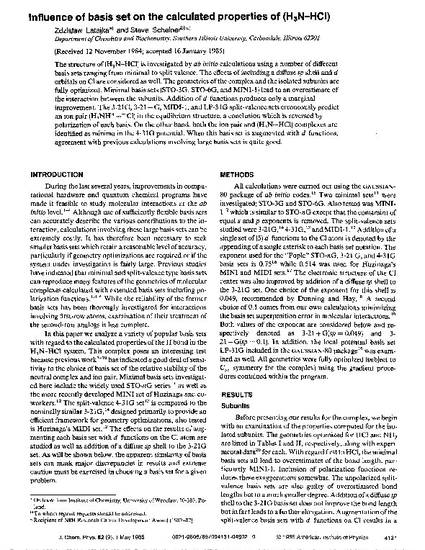
The structure of (H3N–HCl) is investigated by ab initio calculations using a number of different basis sets ranging from minimal to split valence. The effects of including a diffuse sp shell and d orbitals on Cl are considered as well. The geometries of the complex and the isolated subunits are fully optimized. Minimal basis sets (STO‐3G, STO‐6G, and MINI‐1) lead to an overestimate of the interaction between the subunits. Addition of d functions produces only a marginal improvement. The 3‐21G, 3‐21+G, MIDI‐1, and LP‐31G split‐valence sets erroneously predict an ion pair (H3NH+⋅⋅⋅−Cl) in the equilibrium structure, a conclusion which is reversed by polarization of each basis. On the other hand, both the ion pair and (H3N⋅⋅⋅HCl) complexes are identified as minima in the 4‐31G potential. When this basis set is augmented with d functions, agreement with previous calculations involving large basis sets is quite good.

Originally published by American Institute of Physics in the Journal of Chemical Physics.
Publisher's PDF can be accessed through the remote link.